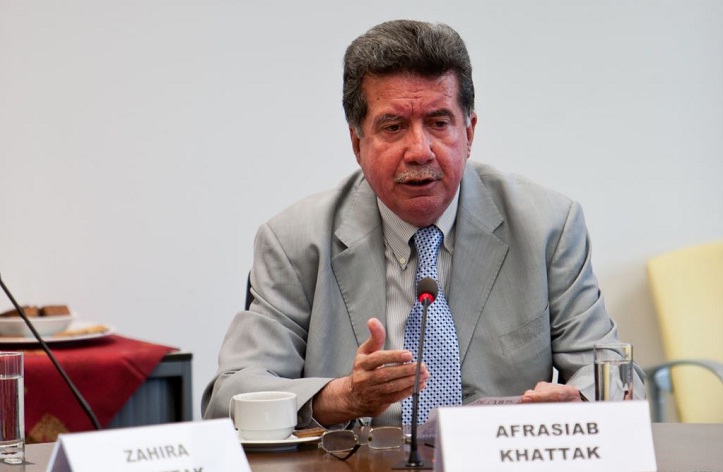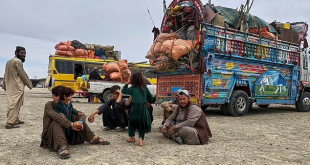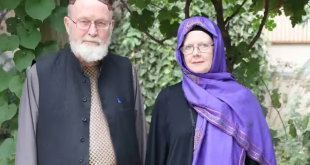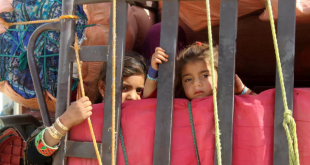By Afrasiab Khattak
China’s 21st-century grand strategy, formally called the Belt and Road Initiative (BRI), aims to build trade and infrastructure networks connecting Asia with Europe and Africa along the ancient Silk Road routes and beyond. Conceived by Chinese President Xi Jinping in 2013, BRI comprises the Silk Road Economic Belt and the 21st-century Maritime Silk Road. “While BRI was launched by China, its opportunities and outcomes are shared by the world,” he said of its intended benefits in April.
Beijing’s ambitious grand strategy, backed by nearly $1 trillion dollars in infrastructure and energy investments, presents an unprecedented opportunity to boost regional cooperation and resolve intractable conflicts in the Eurasian heartland. But it also faces numerous challenges because of the uneven and disparate state development across the vast region, which is home to most of the global population. Security, diplomatic, and political interests will ultimately compel China to address issues and concerns that its foreign policy has largely avoided.
BRI is a grand international project. Being a Chinese initiative with the ancient Silk Road as its reference point, the Eurasian region is its launching pad. This is why its flagship project, the China-Pakistan Economic Corridor (CPEC), aims to connect western China to the Arabian Sea and west Asia. Road, train, and air connectivity with five Central Asian countries along with oil and gas pipelines is another major priority evoking the ancient trade routes.
Abandoning its hands-off approach to some conflicts on its borders, China is now actively taking part in promoting efforts for political reconciliation in Afghanistan to bring the prolonged Taliban insurgency to an end. Companies backed by Beijing have also won large projects to extract Afghanistan’s abundant mineral deposits. It was a dramatic move by China and India to agree on implementing a joint economic project during the summit between Xi and Indian Prime Minister Narendra Modi in Wuhan in May 2018. “This agreement constitutes recognition of Afghanistan’s efforts to become a ‘roundabout’ in Asian cooperation. It’s exactly what the [Afghan] government has been working for,” one astute observer noted at the time.
Such initiatives have inevitably provided Beijing high ground over the West when US President Donald Trump’s administration has tried to characterize Asia as the scene of a new great power race where the Chinese BRI is competing against the ‘Indo-Pacific’ led by Washington and New Delhi. By indicating that cooperation should prevail over competition, Beijing has signaled its willingness to lead a multipolar world shaped by the competition, primarily among states, during the past century.
China has backed this approach by demonstrating pragmatism in embracing multiple regional cooperation organizations such as the Association of Southeast Asian Nations (ASEAN), the Eurasian Economic Union (EAEU) and the Greater Eurasian Partnership. With China and Russia in the lead, the role of the Shanghai Cooperation Organization (SCO) is pivotal in deepening economic cooperation, overcoming political irritants, and promoting security cooperation in the region. It is undoubtedly the most important platform of regional cooperation in the Eurasian region that has strengthened relations among member states. Even countries such as Pakistan and India, despite their acrimonious bilateral relations, have sought full membership of SCO. Significantly, both have pledged to follow its program for cooperation.
But significant real-world problems remain on the path toward realizing grand visions of cooperation. Beijing’s trajectory of transforming into a global economic giant with ‘socialism with Chinese characteristics’ has been unique. In practice, this now means capitalism with Chinese characteristics. It is complemented by a pragmatic Chinese foreign policy that has been effective in dealing with the sociopolitical differences of various countries. But this approach faces a key test. Can Beijing now indefinitely withhold the impact of internal policies on its foreign policy?
More significantly, there is the question of how other countries, with varying trajectories of development, will cope with the rise of China and its new role. The Eurasian region has witnessed different experiments of state and nation building on the ruins of the former Soviet Union. A centralized state built around a “strong president” (at the cost of strong state institutions) has been the predominant trend. Russia, Central Asian republics, and Belarus are good examples. Most of these countries have tended to go for economic unions devoid of ideological content and political groupings to avoid international polarization.
Now BRI will have to address such questions. The idealistic vision of BRI as the revival of cultural links between nations living along the routes of ancient Silk Road must address the realities of the modern world. The evolution of a multipolar world in recent years has been accompanied by new ethnic, cultural, and political configurations. Beijing has carefully handled the question of links among various ethnic groups living in China and the nearby countries of Asia. Foremost among these is the emergence of Turkic-dominated Central Asian states and countries in the Caucasus. This has revived the notion of a greater Turkic community from Xinjiang to Istanbul.
Given the international criticism of Beijing’s human rights record in Xinjiang, it will require Chinese political foresight, wisdom, and statesmanship. Beijing will need to find grounds of unity in this diversity as a foundation for peaceful coexistence and cooperation. It will also need to adopt a similar approach to political rivalries on the regional level. Maybe China will need to pioneer a modern Asian version of the treaties of Westphalia.
Afrasiab Khattak is a former Pakistani Senator and an analyst of national and regional political developments.
 Afghanistan Times
Afghanistan Times




